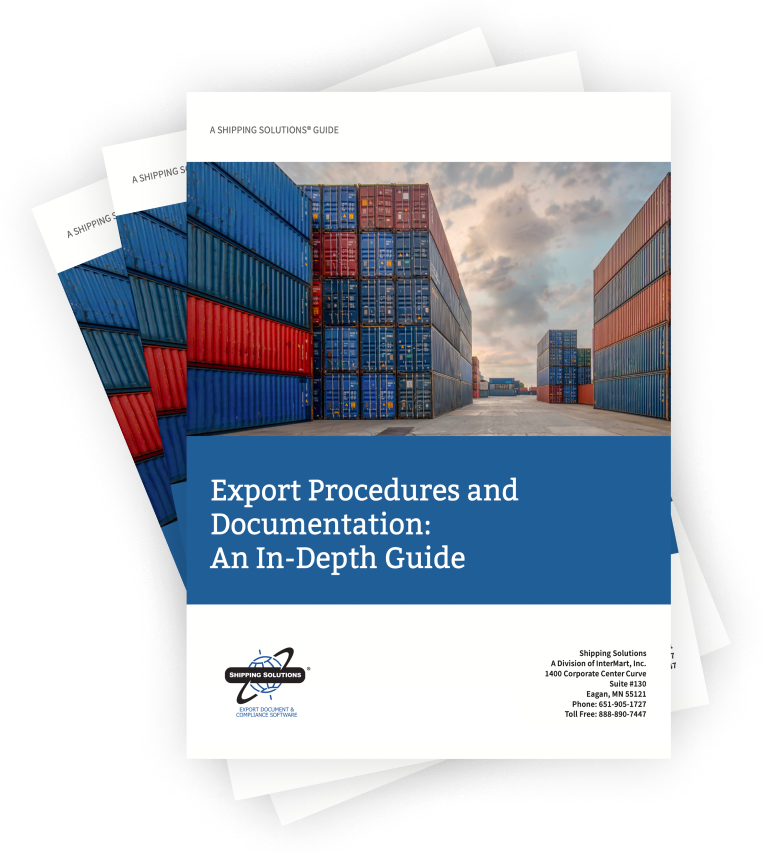The International Trade Blog International Sales & Marketing
Export Basics: 7 Tips for New Exporters
On: September 16, 2019 | By:  Francis Peters |
5 min. read
Francis Peters |
5 min. read
 Smaller businesses often think that exporting is only for large multinational companies. But that's usually not the case. In fact, more than 97% of all U.S. exporters are small and medium-sized businesses employing less than 500 people.
Smaller businesses often think that exporting is only for large multinational companies. But that's usually not the case. In fact, more than 97% of all U.S. exporters are small and medium-sized businesses employing less than 500 people.
What's really surprising is the number of businesses that aren't exporting. According to the U.S. Department of Commerce, less than one percent of the 30 million companies in the U.S. actually sell their products internationally. Many of these firms could benefit from exporting, but have yet to do so.
Why would a business that is successful in the U.S. market want to start selling overseas? Two big reasons: (1) it helps increase your sales volume, and (2) it can extend your products' life cycles. Most importantly, exporting can help your business continue to grow its revenue and profits. If your company doesn't target new overseas markets, chances are your competition will.
The export process has become much more streamlined in recent years for even the smallest companies due in part to the internet, improved logistics services, and the array of export assistance programs available from the U.S. government and other organizations. If you already have a track record of selling in the United States, which is one of the world's most open and competitive economies, then you are likely a good candidate for selling overseas.
7 Tips for New Exporters
Before launching an export initiative, it is essential to plan and prepare. Selling a product or service overseas means doing business in a new environment where language requirements, export documents, and payment options all may be different.
To deal with these challenges, here are 7 tips for success:
Tip #1—Make a Commitment
Businesses new to exporting can expect to face numerous challenges such as redesigning packaging or establishing a new distribution channel. The whole process usually takes time—often two to three years to establish a foothold. No matter how prepared businesses are to enter an overseas market, they initially will make mistakes. It's important that top management understands this because, without that strong backing, there may be a tendency to pull back at the slightest sign of a setback.
Tip #2—Do Your Research
Many companies spend more time and money researching how to expand their existing domestic market than on how to sell in another country. To be successful overseas, do some research on potential markets. Which countries are leading suppliers or leading importers of your products? Which countries have the lowest duties? Write an international marketing plan, but whatever strategy you choose, address a range of potential issues from unique labeling requirements to new competitors.
Tip #3—Focus Your Efforts
In creating any new process, it's best to focus on one area first. Likewise, many successful exporters began by selling in just one overseas market, learning from that experience, and then applying that knowledge to new international markets. For example, first-time exporters in Minnesota often target Canada as the first international market to enter. The proximity of Canada and the benefits of the reduced North American Free Trade Agreement (NAFTA) tariffs are advantageous for new Minnesota exporters ramping up on their export knowledge.
Tip #4—Set Aside Resources
Entering new markets requires resources—primarily time and money. Companies in the best position to export already have an established track record of domestic growth and a steady revenue stream. When you enter an overseas market, you'll have a steep learning curve. Often, new requirements and in-house procedures can range from how goods are packaged to how sales orders are processed. For many companies, gearing up a business to export means having to reallocate resources from domestic business opportunities.
Tip #5—Increase Your Company's Export Knowledge
Look for opportunities to develop and expand the export knowledge of your staff. Work toward credentials to ensure you develop a baseline of skills. For exporting companies, encourage staff to attain the Certified Global Business Professional (CGBP) credential. The CGBP credential is a nationally recognized professional designation that demonstrates an individual's practical knowledge in conducting international trade including supply chain management, international marketing, and trade finance.
Tip #6—Line Up Experts
It's unlikely that one person will know all aspects of the export process in full detail. As you prepare to export, establish a network of specialists with expertise across a range of issues such as export documentation, letters of credit, or international contracts. You will want to develop some expertise in-house; others you will want to outsource.
At a minimum, you will want to identify a freight forwarder, banker and attorney who can assist you. A good starting point for new exporters is your state's District Export Council, an organization comprised of local business leaders who act as consultants to small- and medium-sized businesses that want to export.
Tip #7—Leverage Government Resources
The U.S. Commercial Service, which has Export Assistance Centers located across the U.S. and offices in many American Embassies and Consulates overseas, is a global network of trade professionals who can provide ground support in many overseas markets to assist U.S. exporters. Services include helping U.S. companies find new business partners overseas, exhibit at international overseas trade shows, research opportunities in new markets, or address market access issues. Find the U.S. Commercial Service office nearest you here.
Successful exporters can generate increased revenue and profits. But exporting is not without its own set of challenges and requirements. For small and medium-sized businesses that are first-time exporters, planning and preparation are critical to ensure success.
About the U.S. Commercial Service
As the trade promotion unit of the U.S. Department of Commerce's International Trade Administration, the U.S. Commercial Service connects U.S. businesses with international buyers through a network of offices in 108 U.S. cities and U.S. Embassies and Consulates in more than 70 countries. Services include export counseling, market research, business matchmaking, participation in trade events, international partner searches, advocacy and more. For more information visit trade.gov.
Like what you read? Join thousands of exporters and importers who subscribe to Passages: The International Trade Blog. You'll get the latest news and tips for exporters and importers delivered right to your inbox.
This post was originally published in February 2013 and has been updated to include current information, links and formatting.

About the Author: Francis Peters
Francis “Chip” Peters is the Senior Commercial Officer for the U.S. Commercial Service at the U.S. Embassy in Kuala Lumpur, Malaysia. Prior to that, he has served in various positions and posts in the United States and around the world for the U.S. Commercial Service.
For 15 years, Chip worked in the private sector, including positions in the telecom and computer industry. He held positions in global marketing, international sales, and product management with Fortune 500 companies AT&T and Dell in the U.S. and Malaysia, as well as with high-tech startups in Austin, Texas and Thailand. For four years, Chip also ran his own consulting business, delivering strategic marketing and communication solutions for client firms. He has lived and worked Asia for more than ten years.
In addition to his business experience, Chip taught international trade and finance for four years as an adjunct professor at St. Edward’s University in Austin and served two years as a U.S. Peace Corps volunteer in Mali, West Africa. Chip holds a B.A. from Union College, an M.A. from Columbia University, and an M.B.A. from Chulalongkorn University.



